
ТП (урок 3)
.pdf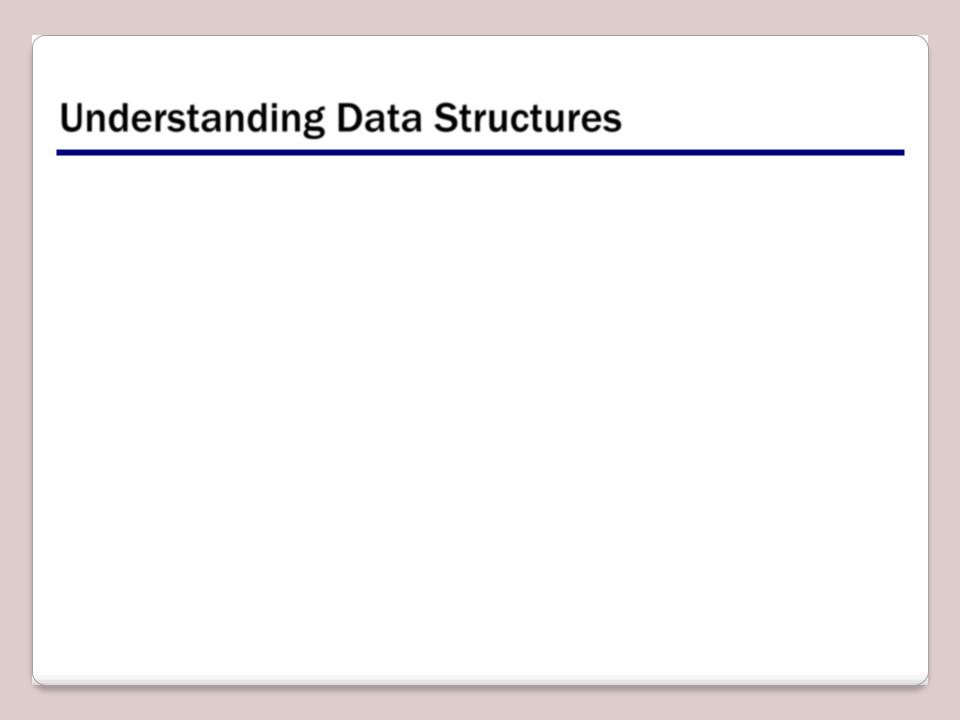
Understanding Data Structures
•Data structures are techniques for organizing and storing data in computer memory.
•Understanding a data structure involves
–Understanding the storage pattern,
–Understanding what methods are used to create, access, and manipulate the data structure.
•Common data structures
–Arrays
–Queues
–Stacks
–Linked Lists

Arrays
•An array is a collection of items of the same type.
•The items in an array are stored in contiguous memory locations.
•Capacity of an array is predefined and fixed.
•Any array item can be directly accessed by using an index.
•C# array indexes are zero-based.

Array - Internal Representation
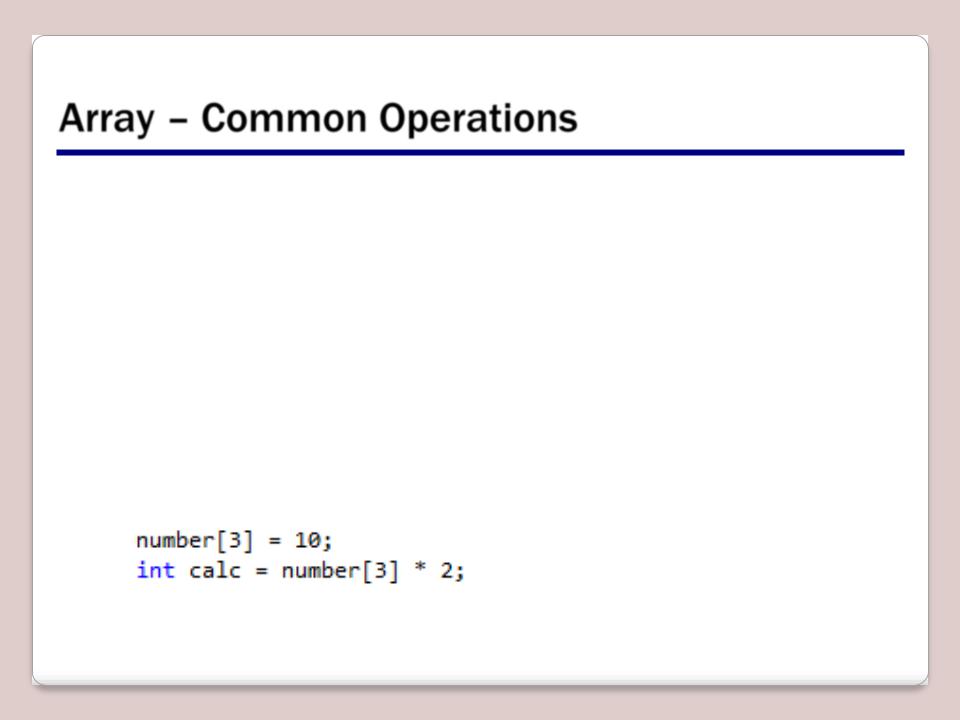
Array – Common Operations
•Arrays support the following operations:
–Allocation
–Access
•Following code assigns a value of 10 to the fourth item of the array, and twice that value is then assigned to the variable calc:

Queues
•A collection of items in which the first item added to the collection is the first one to be removed.
•First In First Out (FIFO).
•Queue is a heterogeneous data structure.
•Capacity of a queue is the number of items the queue can hold.
•As elements are added to the queue, the capacity can be automatically increased.
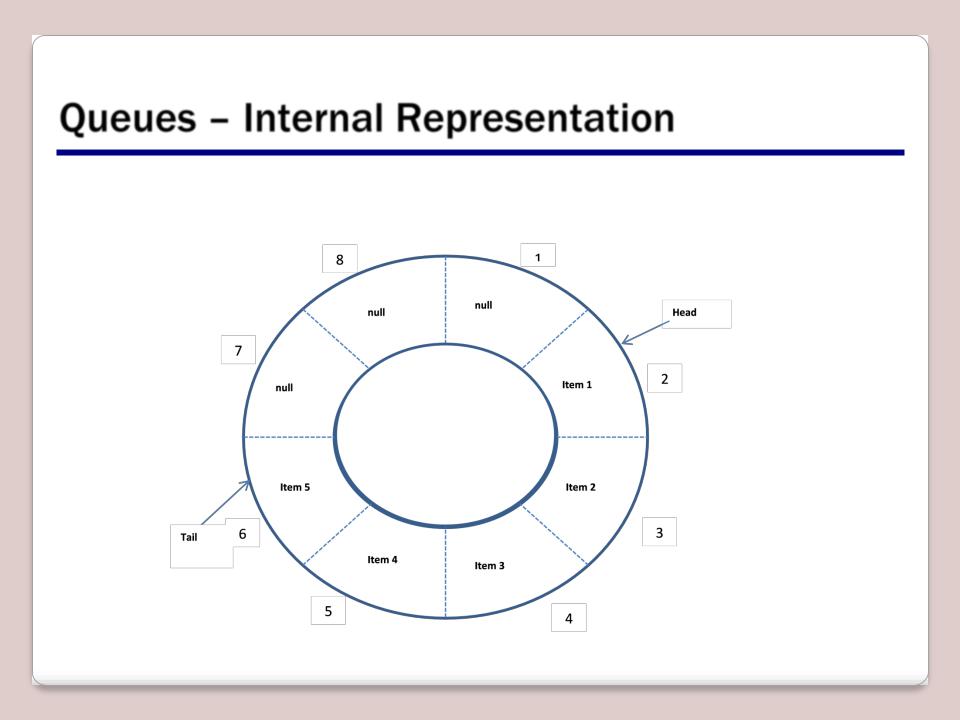
Queues – Internal Representation

Queues – Common Operations
•Enqueue: Adds an item to the tail end of the queue.
•Dequeue: Removes the current element at the head of the queue.
•Peek: Access the current item at the head position without actually removing it from the queue.
•Contains: Determines whether a particular item exists in the queue.
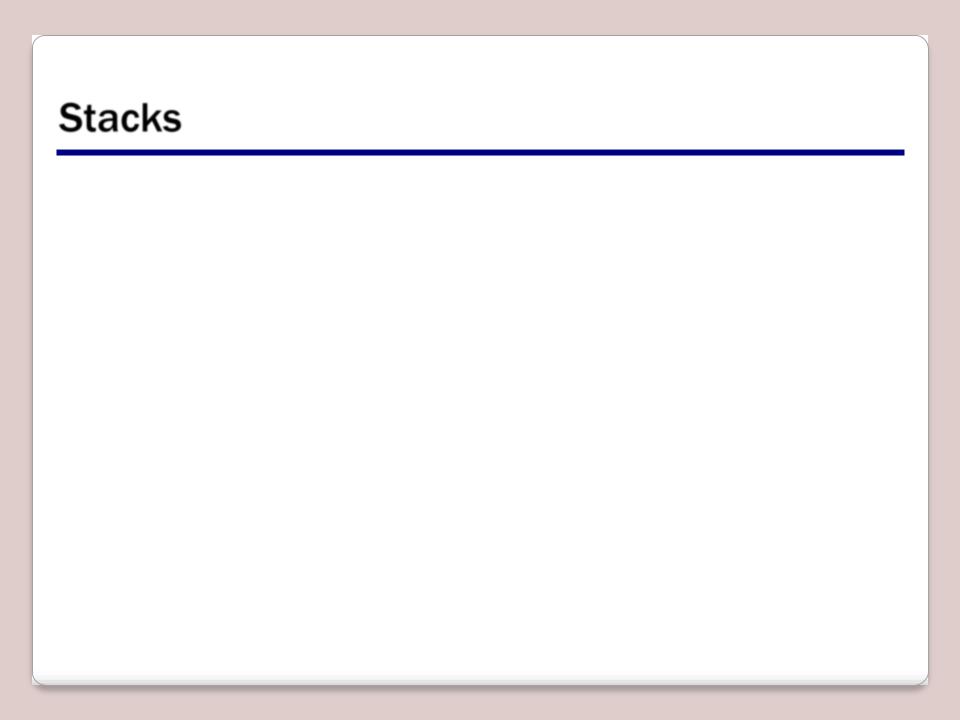
Stacks
•A collection of items in which last item added to the collection is the first one to be removed.
•Last In First Out (LIFO).
•Stack is a heterogeneous data structure.
•Capacity of a stack is the number of items the queue can hold.
•As elements are added to the stack, the capacity can be automatically increased.
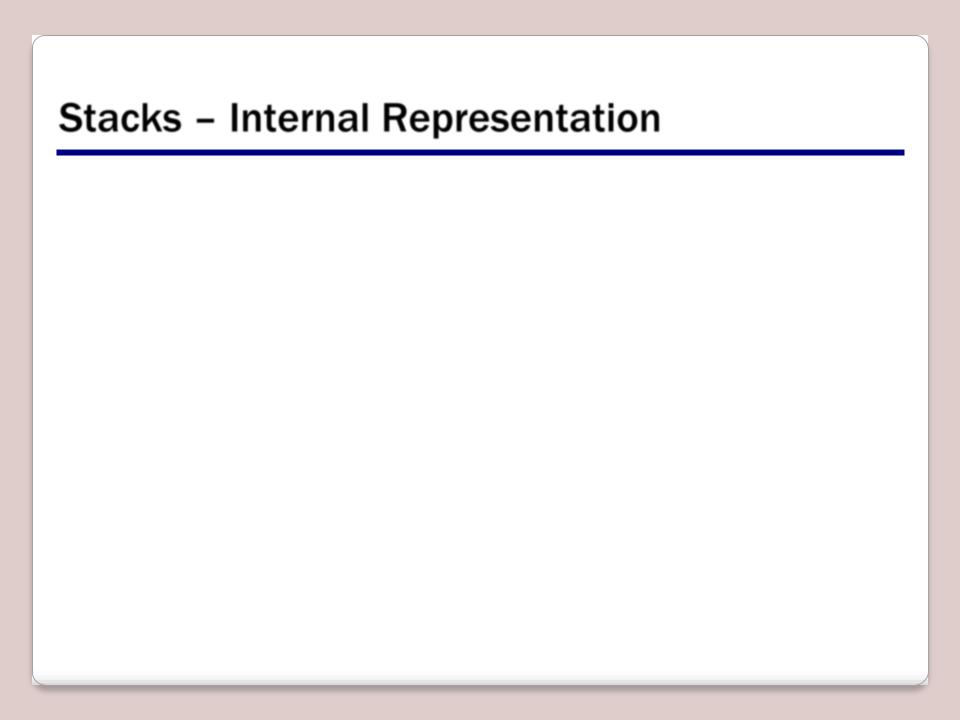
Stacks – Internal Representation
•A stack can be visualized just like the queue, except that the tail is called the top of the stack and the head is called the bottom of the stack.
•New items are always added to the top of a stack; when this happens, the top of the stack starts pointing to the newly added element.
•Items are also removed from the top of the stack, and when that happens, the top of the stack is adjusted to point to the next item in the stack.

Stack – Common Operations
•Push: Adds item to the top of the stack.
•Pop: Removes the element at the top of the stack.
•Peek: Access the current item at the top of the stack without actually removing it from the stack.
•Contains: Determines whether a particular item exists in the stack.
